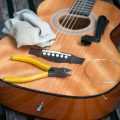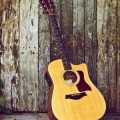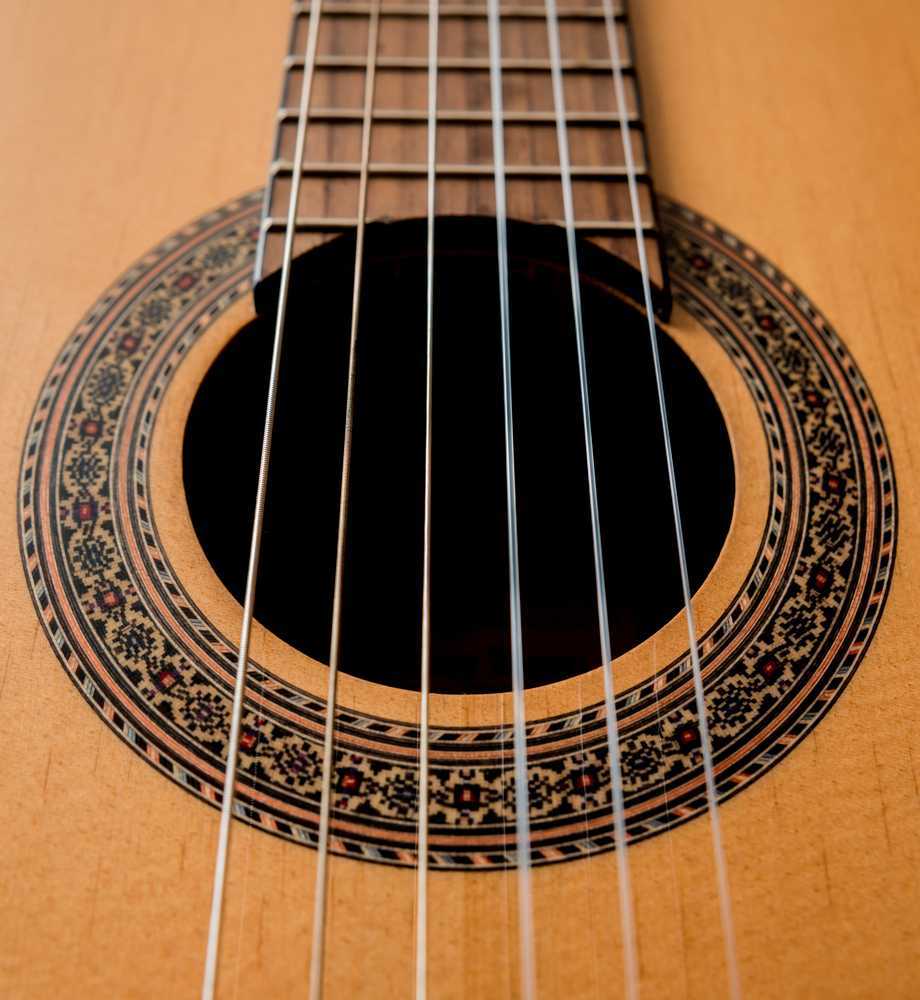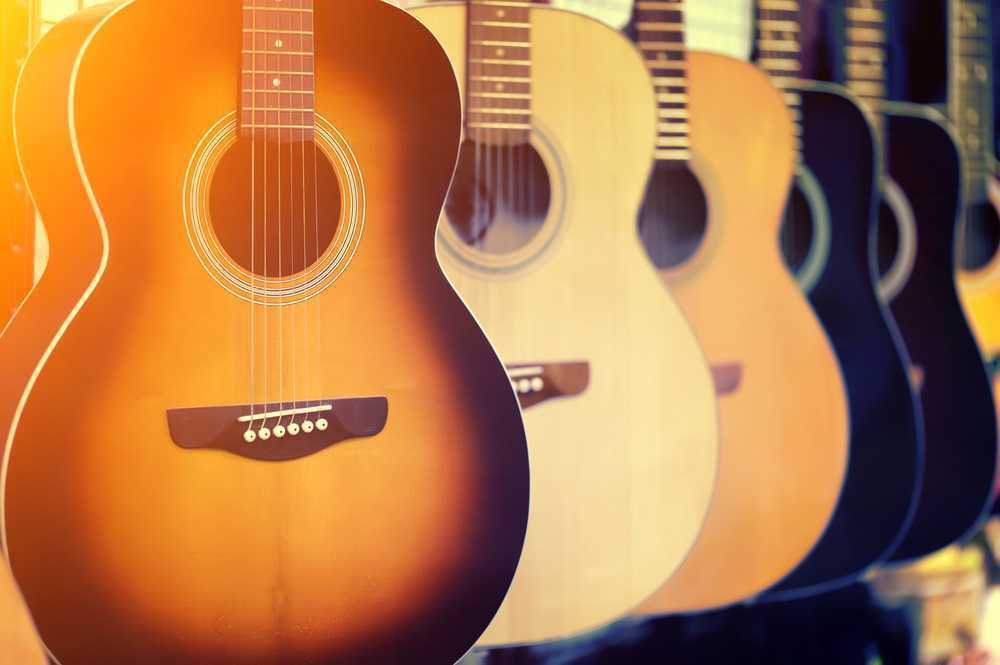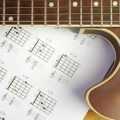 Every year, millions of people set out to learn how to play the guitar, but sadly many of those people never fulfill their goal of learning how to play this incredible instrument. Why? For younger students especially, figuring out how to tune a guitar is a difficult skill that can be incredibly difficult to practice and master. Without being properly tuned, a guitar cannot be played correctly.
Every year, millions of people set out to learn how to play the guitar, but sadly many of those people never fulfill their goal of learning how to play this incredible instrument. Why? For younger students especially, figuring out how to tune a guitar is a difficult skill that can be incredibly difficult to practice and master. Without being properly tuned, a guitar cannot be played correctly.
Compared to other common instruments like the saxophone or even a drum set, the guitar is a relatively easy instrument to pick up. The concept of pressing down strings hard enough to sustain pitches with one hand while strumming the strings with another hand comes naturally to most people, even young students. But if a student can’t keep their guitar in tune, their instrument won’t be capable of producing even the simplest melodies, chords, and scales. This is why tuning is so essential.
Today we’re going to not only show you quick and easy methods for keeping your guitar in standard tuning, but also how to tune a guitar to some great alternative tunings as well.
What Does It Mean To Be “In Tune”?
For most guitar players, being “in tune” means having each of their guitar strings tuned to a standard set of pitches. This doesn’t mean that guitars are only in tune when they’re tuned to standard tuning. Many guitar players from different genres of music tune their guitar strings to alternative pitches to be able to play songs in different tunings. This means that a guitar player can tune their guitar strings to any pitch they want and be “in tune.” What makes a guitar player in tune is them intentionally tuning and maintaining their guitar strings to a predetermined set of pitches.
Standard Tuning
Most guitar parts found in the songs in popular music feature standard tuning. Starting with the thickest string on the guitar, which we’ll call the 6th string, the standard pitches of the open strings of the guitar are E, A, D, G, B, and E. There are lots of easy mnemonic acronyms for memorizing guitar string names. Here are just a few examples:
Eddie Ate Dynamite, Good Bye Eddie
Elvis Always Did Great Banana Eating
Every Apple Does Good Being Eaten
Every Amp Deserves Guitars Blistering Everyday
Eat Apples Daily Grow Big Ears
Eric And Dave’s Guitars Beat Everyone
Every Acid Dealer Gets Busted Eventually
Elephants And Donkeys Grow Big Ears
Eat A Dog, Grow Big Ears
Even Average Dogs Get Bones Eventually
Every Apple Does Go Bad Eventually
Eat All Dead Gophers Before Easter
If it’s helpful to you, try creating your own mnemonic acronym. Now that you know what pitches are found in standard tuning, we’re going to show you how to tune a guitar by ear.
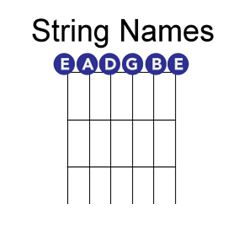
Tuning By Ear
For someone completely new to music, learning how to tune a guitar by ear can be really difficult. In order for the guitar to be tuned correctly, the 6th E string has to already be perfectly tuned before the rest of the strings can be tuned to it. You shouldn’t attempt to tune your guitar by ear unless you have an ear strong enough to detect the difference between pitches. If you’re looking for an easier way to tune, feel free to skip ahead over this section.
Regardless of what method or device you choose to tune your guitar, you’ll need to adjust the tuning pegs positioned on the head of your guitar to get the job done. Tuning pegs are adjustable devices that can tighten or loosen each string. How loose or tight each string is will determine the pitch of your string. Typically, twisting the tuning peg in a counterclockwise fashion will tighten or sharpen the pitch, while moving it clockwise will have the opposite effect. It’s extremely important to note here that tuning pegs are sensitive, and that cranking the pegs too quickly will result in broken strings. It’s a good idea to tune slowly by moving the tuning pegs just a bit at a time.
For tuning by ear, first get your 6th string in tune. To do this, you’ll need an accurate pitch reference to tune to. These days, this is as easy as searching “tune to E guitar string” through a quick internet search. After your 6th string is tuned correctly, play the A note located on the 5th fret of the 6th string. The pitch generated here will be the reference point for the 5th string. Once the 5th string is tuned to A, play the D note on the 5th fret and tune the 4th string to that pitch. Now, you’ll do the same thing on the 4th string to tune the 3rd string to the G found on the 4th string’s 5th fret. The reference note on the 3rd string is the only pitch that’s not located on the fifth fret. Here, you’ll play the 4th fret as a reference note of B for the second string. Lastly, the reference pitch on the 2nd string is the E note found on the 5th fret. It sounds very complicated, but it’s actually quite simple. Here’s a visual representation to help you tune by ear:
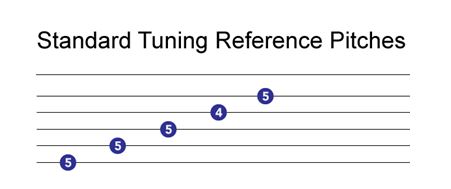
Putting New Strings On The Guitar
If you’re tuning with new strings for the first time, we recommend gently stretching each string before turning the tuning pegs on your guitar. New strings have the tendency to go flat the minute they’re put on a guitar, so stretching your strings will help remove some of the tension so your guitar will have a better chance of staying in tune. The strings here simply need a light stretch, so keep in mind that pulling them too hard can absolutely result some of your strings getting broken.
Tuning Devices
If you’re new to the guitar or are just plain not great at hearing pitches, then you’ll want to pick up a device to help you keep your guitar tuned. At any guitar store you’ll find tuning devices ranging from foot pedal tuners designed to help active performers keep their axes tuned on stage down to simple tuners built for young students that clip right onto the head of their guitar. We’ll walk you through a few of the more common tuning devices to help you decide which one is right for you.
Attachable Tuners:
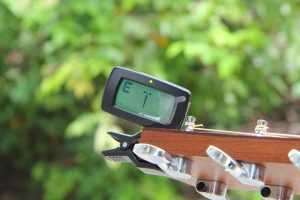
These tuners are inexpensive and easy to use, perfect for beginner students learning how to tune a guitar. They usually clip to the head of your guitar and detect the pitches of your strings by measuring the vibration of a string when it’s strummed. Typically, these tuners will display note names on a large display and will light up when each of your strings is tuned to the right pitch in standard tuning. Attachable tuners are ideal for adult beginners and younger students.
External Tuners:
External tuners can usually listen to a pitch and be able to tell you what exact note you’re playing, but also feature a cable port so you can just plug your guitar right in. There’s no real advantage to these tuners other than the fact that some come with a metronome.
Pedal (Stompbox) Tuners:

These nifty pedals are a real gift for any serious musician who performs often. Pedal tuners fit right into any guitarist’s pedal board so you can just plug in, tune, and play. In addition to tuning, these tuners also completely mute your guitar, so they’re any easy way to reduce unwanted buzzing or stage noise from electric or acoustic guitar. These tuners don’t detect pitches anywhere other than from exactly where you plug in, which gives guitarists the ability to tune mid-song if they need to. If you’re serious about playing shows, you need a pedal tuner.
Smartphone Apps:
There’s a myriad of free and inexpensive guitar tuners available for smartphones, but as we all know, not all apps are created equal. Before spending money or wasting memory space on your phone downloading a free tuning app, do some research into a good tuning app that actually works. The ClearTune and Tuna Pitch tuning apps are popular among guitarists.
Tuners in amps:
Some amplifiers include visual aids to help you keep your guitar in tune while recording or performing. These can be helpful, but they don’t feature the muting capabilities that foot pedal tuners do.
Alternative Tunings
Alternative tunings are a great way for seasoned guitarists to explore new and unconventional sonic territories. If you’re tired of the same old scales and chord shapes, alternative tunings are an excellent way to shake things up. While exploring new tunings, it’s a good idea to have a tuner around to help you tune each string to the correct alternatively-tuned pitch. Below, we’ll highlight how to tune a guitar to some important and easy-to-play-in alternate tunings.
D-A-D-G-B-E
Drop D tuning is the probably the easiest alternative tuning. In this tuning, guitarists tune their open 6th E string to D by using the open 4th string as a reference point. Many punk and rock guitar parts feature Drop D tuning.
D-A-D-G-A-D
This is a phenomenal open tuning that is simultaneously easy and difficult to play in. Playing in the key of D Major is a breeze in this key, but playing in other keys can be somewhat difficult.
C-G-C-F-C-E

Beloved songwriter Nick Drake often used this alternate tuning. It’s featured in his most famous song, “Pink Moon,” and it’s usually referred to as open C tuning.
C-G-C-F-A-D
Typically referred to as Drop C tuning, this alternate tuning is widely used by rock and heavy metal music. Tuning the guitar this way brings the instrument’s range down into a bass guitar range, and gives guitarists the ability to play low hard-hitting power chords.
G-G-D-G-B-D
This tuning is found in The Rolling Stones songs “Brown Sugar” and Honky-Tonk Women” and Joni Mitchell’s songs “Electricity” and “For The Roses.” The chord shapes in open G tuning are typically quite easy to play.
Eb-Ab-Db-Gb-Bb-Eb
The famous Beatles song “Across The Universe” uses this tuning. It’s essentially standard tuning but a half step down.
These are just some of the many different ways out there that you can alternatively tune your guitar, but you’ll need to know how to tune a guitar to standard tuning first before trying out new tunings. Standard tuning is norm because of how many shapes, scales, modes, and other musical ideas can be formed by playing on a guitar tuned in such a way.


